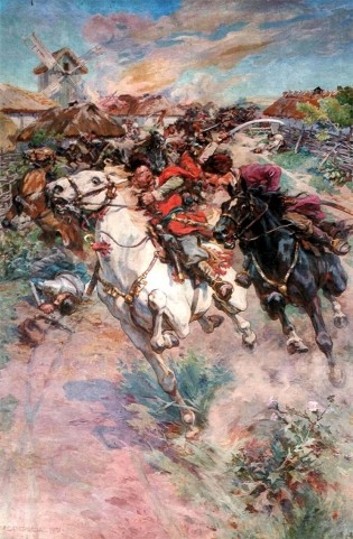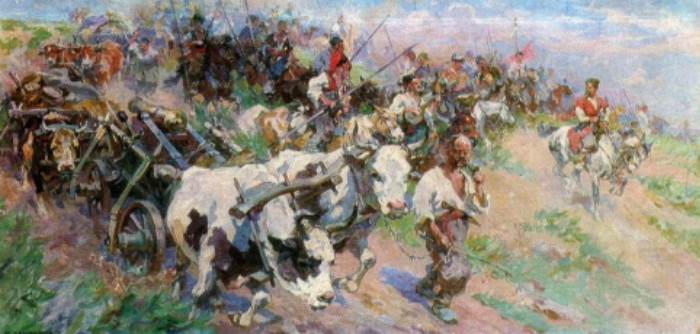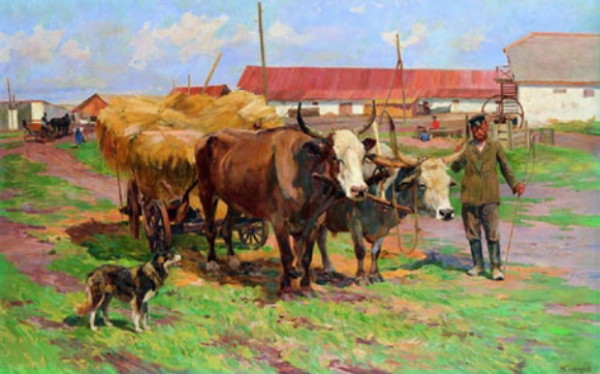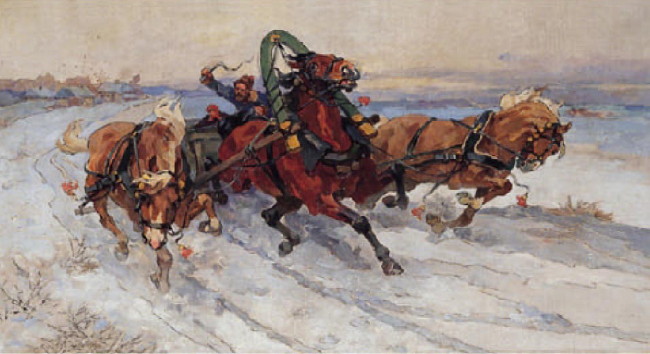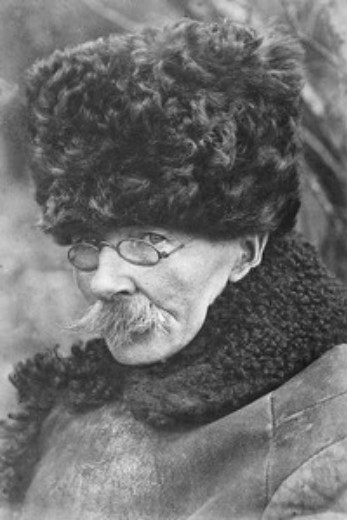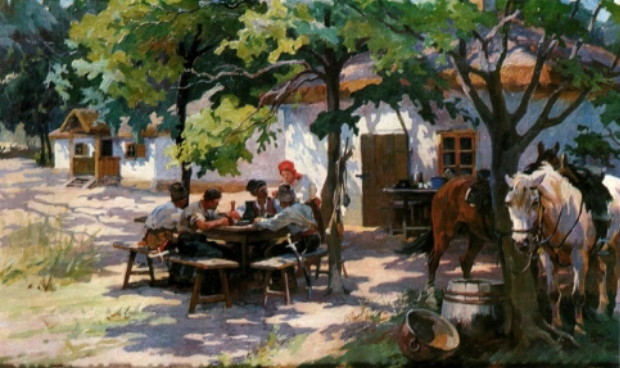Samokysh, Mykola
Samokysh, Mykola [Самокиш, Микола; Samokyš] (Samokysha), b 25 October 1860 in Nizhyn, Chernihiv gubernia, d 18 January 1944 in Simferopol. Painter and graphic artist; full member of the Saint Petersburg Academy of Arts (SPAA) from 1890. While studying at the SPAA (1879–85) he belonged to a group of painters, including Serhii Vasylkivsky, Porfyrii Martynovych, and Opanas Slastion, dedicated to depicting the history and folkways of the Ukrainian people. After returning from his studies in Paris (1886–9) he painted several historical canvases for the Tbilisi Museum of Military History, which established his reputation as a battle painter. In 1894–1917 he headed the SPAA battle-painting studio. He created an album of drawings and watercolors of the Russo-Japanese War with texts from his diary (1905) and the series ‘The Great War in Images and Pictures’ (1915). Later he painted canvases of the Russian Civil War, such as Attack of the Budenny Cavalry (1923) and The Red Army Crossing the Syvash (1935). Samokysh never lost contact with Ukraine. Around the beginning of the century he often visited Ukraine and took part in exhibitions there. He designed an album of Taras Shevchenko's works (1889) and illustrated an album about Sevastopol and its past (1904). With Vasylkivsky he illustrated Dmytro Yavornytsky's Iz ukrainskoi stariny/La Petite Russie d'autrefois (1900), an album which was seen as the continuation of Shevchenko's Zhivopisnaia Ukraina. In 1912 Samokysh prepared an album of Ukrainian ornamentation. In the early 1900s he and Vasylkivsky painted the murals in the Poltava Gubernia Zemstvo building. From 1911 he spent every summer painting in Ukraine. In 1921 he moved to Simferopol, and from 1937 to 1941 he taught at the Kharkiv Art Institute.
In the Soviet period much of Samokysh's work was devoted to the history of the Cossacks, which he depicted in canvases such as B. Khmelnytsky's Entry into Kyiv in 1648 (1929), The Battle of Zhovti Vody (1930), I. Bohun's Battle with Czarniecki at Monastyryshche in 1653 (1931), Sea Battle of the Zaporozhians with a Turkish Battleship (1932), and The Kharkiv Fortress in the 18th Century (1936). A good part of his graphic work consists of battle scenes done in watercolor, ink, or pencil. Altogether Samokysh painted or drew over 10,000 works. Several thousand were book illustrations, some of them to editions of works by Ukrainian writers, such as Marko Vovchok, Nikolai Gogol (his Taras Bul’ba), and Ivan Nechui-Levytsky (his Mykola Dzheria), and others for journals, such as Ukraïns’ka khata (1909–14), Niva (1910, 1912, 1914–15, 1917), Solntse Rossii (1914–16), and Myslyvets’ ta rybalka (1928). Samokysh's works are distinguished by their dynamic composition, realistic rendering, vivid colors, and rich content. Books about him have been written in Ukrainian by Mykola Burachek (1930) and Volodymyr Yatsenko (1954, 1979), and in Russian by G. Portnov (1954), A. Polkanov (1960), and V. Tkachenko (1964).
Sofiia Yaniv
[This article originally appeared in the Encyclopedia of Ukraine, vol. 4 (1993).]
.jpg)
